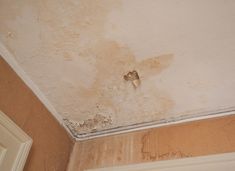
Repairing Water-Damaged Interiors
Water damage in a home’s interior can be a devastating and costly problem, often requiring immediate attention to prevent further deterioration and potential health hazards. Whether caused by flooding, leaky pipes, or roof damage, addressing water-damaged interiors promptly and effectively is crucial for maintaining the integrity and safety of your living space.
The first step in repairing water-damaged interiors is to identify and stop the source of the water. This might involve fixing a leaky roof, repairing plumbing, or improving drainage around the home’s foundation. Once the water source is addressed, the next critical step is to remove all standing water and begin the drying process as quickly as possible.
For effective water removal, use pumps, wet vacuums, and dehumidifiers. Open windows and use fans to increase air circulation, which aids in drying. It’s essential to dry out the affected areas within 24-48 hours to prevent mold growth, which can pose serious health risks.
After the area is dry, assess the extent of the damage. Different materials react to water exposure in various ways. Drywall, for instance, may need to be cut out and replaced if it’s swollen or crumbling. Wood floors might cup or warp, potentially requiring refinishing or replacement depending on the severity.
Insulation is another area of concern. If it has become saturated, it will likely need to be replaced as it loses its insulating properties and can harbor mold. Similarly, wet carpeting and padding often need to be removed and replaced to prevent mold growth and odors.
When it comes to furniture and personal belongings, quick action can save many items. Wood furniture should be dried slowly to prevent warping. Upholstered furniture may need professional cleaning or might be beyond salvage if heavily soaked.
Electrical systems affected by water damage require inspection by a licensed electrician before use to ensure safety. Outlets, switches, and electrical panels may need replacement if they’ve been submerged.
Throughout the repair process, it’s crucial to document all damage for insurance purposes. Take photographs and keep receipts for all repairs and replacements.
For extensive water damage, consider hiring professional restoration services. They have specialized equipment and expertise to handle large-scale water damage efficiently and safely.
Preventing future water damage is as important as repairing current issues. Regular maintenance of your home’s plumbing, roof, and gutters can help prevent many common causes of water damage. Installing water detection devices in prone areas can also provide early warning of leaks.




